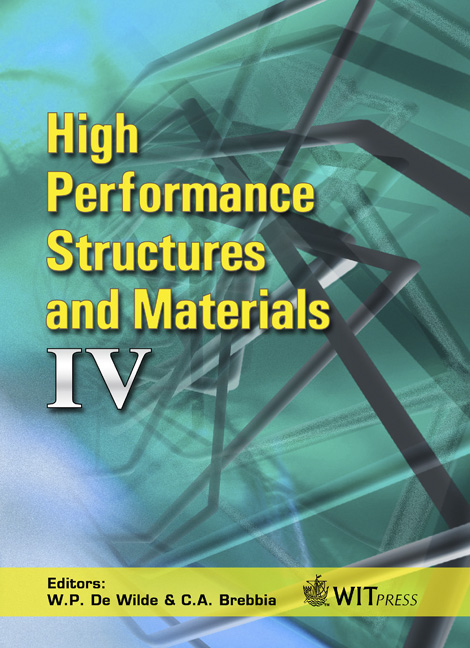Some Challenging Aspects Of Ductile Materials
Price
Free (open access)
Transaction
Volume
97
Pages
10
Page Range
305 - 314
Published
2008
Size
399 kb
Paper DOI
10.2495/HPSM080321
Copyright
WIT Press
Author(s)
P. Brož
Abstract
Crack tip blunting due to tension loads and re-sharpening of the tip in the course of unloading are two fundamental fatigue crack propagation processes in yielding metals. Using an elastic perfectly plastic material simulation, crack propagation analysis was performed up to several hundreds of complete cycles by means of remeshing at some phases of plastic deformation, including computations of the influence of overloads and compressive underloads. For the first several cycles, seaming was indicated, mainly when the crack surface was compressed, resulting in something that seems to suggest striations. Plastic cycling naturally renders a fair amount of crack growth per cycle, crack closure at the tip is predicted in each cycle next to an initial transient phase, and an overload ends in a reduced increase in crack growth. After introducing a single overload, tests on fatigue crack growth were performed with specimens of austenitic steel. The variables are Kmax of the overload and the thickness of the specimen. The latter factor is of crucial importance when considering plane strain/plane stress. For this investigation, the following methodologies were employed: (i) fractographic observations, (ii) deformation analysis, and (iii) crack growth records. For modelling ductile fractures in structural materials, applying mechanism- based conceptions, two numerical methods can be used for simulating the material failure process. Firstly, voids are unambiguously regarded and simulated applying refined finite elements. Secondly, the material comprising the voids is regarded as a homogenized continuum described by porous plasticity simulations. Keywords: crack stopping, ductile crack growth, peak load, remeshing, single overloads, striations, surface folding, transient stage, void growth and coalescence.
Keywords
crack stopping, ductile crack growth, peak load, remeshing, single overloads, striations, surface folding, transient stage, void growth and coalescence.





